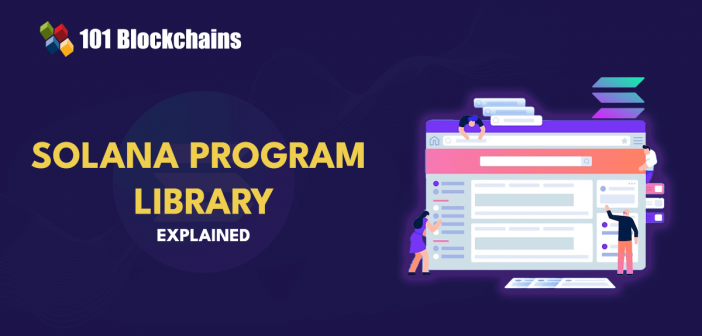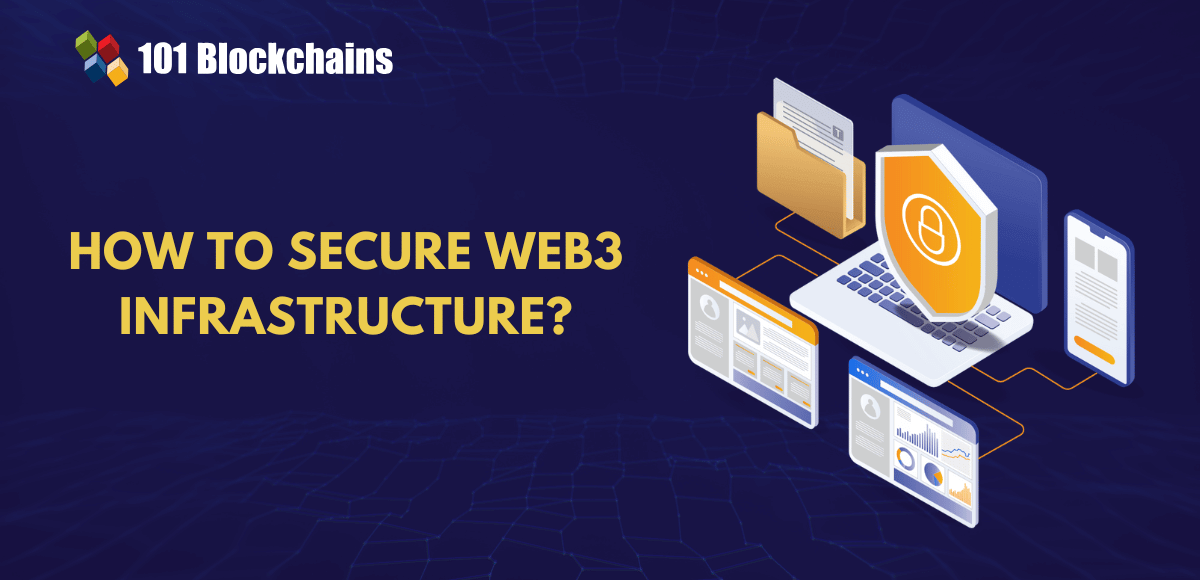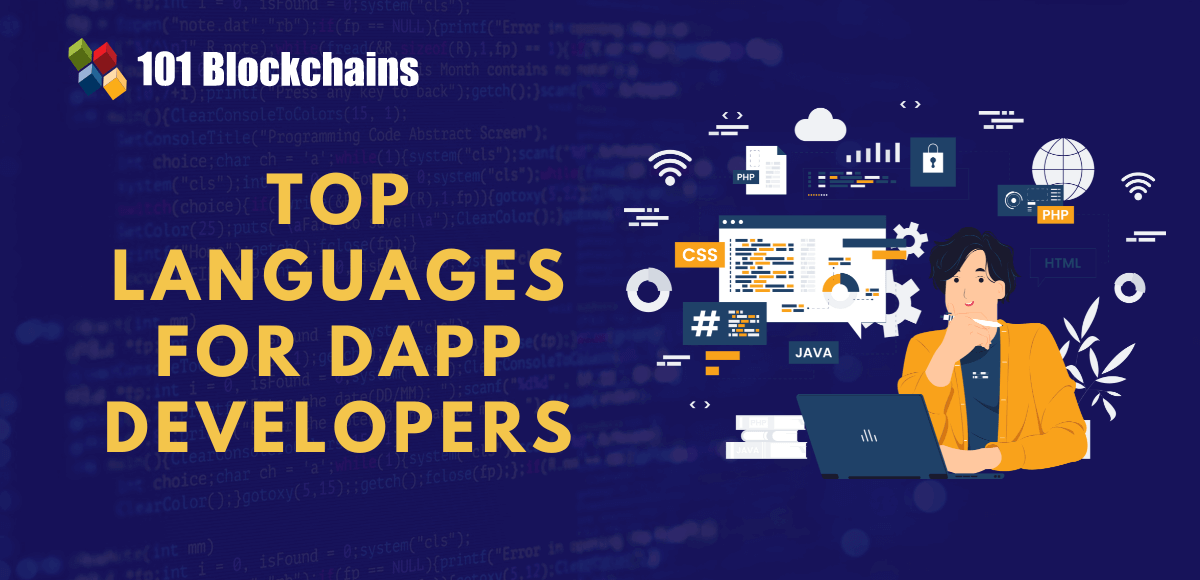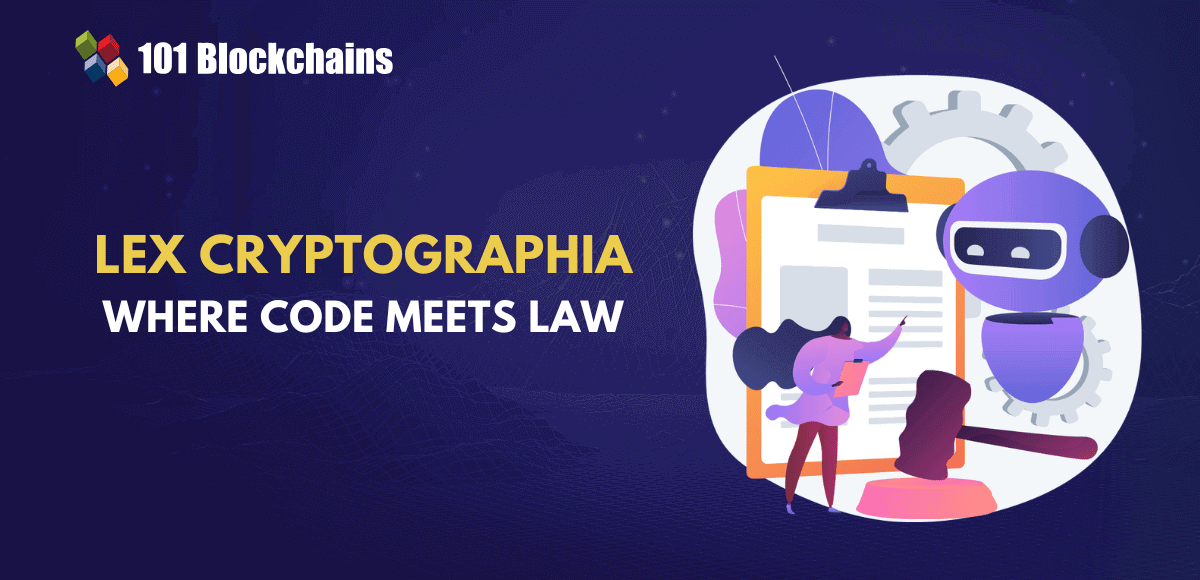Learn how blockchain truly works, master key definitions, and uncover what makes smart contracts so "smart." Dive into the fundamentals, gain valuable insights, and start your blockchain journey today!

- Solidity & Smart Contracts
Georgia Weston
- on August 29, 2024
Know Everything About Solana Program Library
Solana is a powerful alternative to most of the layer 1 blockchain networks running in the web3 ecosystem right now. It is a high-speed programmable blockchain with the advantages of interoperability and scalability for creating and deploying decentralized applications. One of the common factors that you may come across while learning about Solana is the Solana program library guide, as SPL is one of the major components for operations of Solana blockchain.
The Solana Program Library, or SPL, is a comprehensive collection of libraries and tools tailored for supporting dApp development on Solana blockchain. In technical terms, the SPL is a collection of on-chain programs that target the Sealevel parallel runtime. The on-chain programs go through testing with respect to the Solana implementation of Sealevel.
Solana maintains the Solana Program Library, or SPL, as a comprehensive and dedicated documentation library. The answers for ‘What is Solana Program Library’ would focus on how SPL includes all the pre-compiled, deployed, and optimized programs on Solana blockchain. It is important to note that smart contracts on Solana blockchain take the identity of programs. Let us learn more about the Solana Program Library and SPL token program in the following post.
Build your identity as a certified blockchain expert with 101 Blockchains’ Blockchain Certifications designed to provide enhanced career prospects.
What are Solana Programs?
The first thing you need to learn Solana program library is a detailed understanding of Solana programs. Solana programs are automatically executable code that you can find in buffer storage. In Solana blockchain, accounts serve as the buffer storage for Solana programs. On top of it, users can execute programs through transactions just like smart contracts on Ethereum or other programmable blockchains.
However, Solana has a resource-efficient approach for smart contract execution compared to other programmable blockchain networks. In Ethereum, smart contracts store the smart contract program and its state together. On the other hand, Solana uses a stateless program model and accounts to help store data and programs.
Significance of Accounts in Solana
The guides for understanding Solana programs would be incomplete without a description of accounts in Solana. You can learn more about the Solana SPL token program by discovering the meaning of accounts in Solana. Accounts are a type of record in the Solana ledger that can hold data or also serve as executable programs.
If you think that Solana is a database, then the accounts in Solana serve as rows. In addition, pub keys serve as IDs, and the value in the rows points to the information you can find in the account. The information in the rows can be found in the form of programs or smart contract codes and the data or state of the program.
You can identify an account with the help of a unique Public Key, which is 256 bytes in size. Solana offers logical separation between the code and data associated with it, thereby leading to the creation of two distinct variants of accounts. The common types of accounts you can find in a Solana program library example include executable and non-executable accounts. Each type of account has distinct traits, which makes them invaluable additions to the Solana ecosystem.
Executable accounts are accounts that store only the immutable smart contract or program code on Solana.
On the other hand, non-executable accounts also store the data that the related program would need. For example, it would store variables, states, and assets of the program. Anyone can read the data in non-executable accounts. However, only the owner of the program has the right to modify data in non-executable accounts. A comprehensive Solana program library guide could also highlight the fact that only validator nodes could maintain the accounts.
The validator nodes would charge a maintenance cost known as ‘Rent’ for offering memory space to store the required information. Users can pay the ‘Rent’ in the form of lamports, which are the fractional denomination of SOL, the native token of Solana blockchain. At this point, you must learn about Sealevel Parallel Runtime system that helps in maintaining the Solana program code and state data separately.
Excited to learn about the fundamentals of Solana and Solana smart contracts development, Enroll now in the Solana Development Course.
Importance of Sealevel Parallel Runtime
Sealevel Parallel Runtime is the most important component in the Solana ecosystem. It is Solana’s unique approach to implementing a parallel transaction processing system. Sealevel parallel runtime is a valuable component for Solana SPL token program execution and powers the Solana Program Library.
In the case of traditional single-threaded blockchains such as Ethereum, processing transactions one at a time can help avoid concurrency. It is important to note that Ethereum smart contracts are stateful in nature, which implies that the state and the code can be combined in the same contract.
Sealevel Parallel Runtime can help Solana in processing thousands of transactions in parallel without any conflicts. Solana can leverage multiple validator cores and execute almost 50,000 TPS along with a 400 millisecond block time. The tasteless nature of transaction instructions ensures that they can decide the account data for modification. Therefore, Solana programs that do not have the same account data could run simultaneously.
Notable Variants of Solana Programs
The journey to learn Solana program library fundamentals also involves familiarizing with the notable variants of Solana programs. You can find two variants of programs in the Solana ecosystem, such as native and on-chain programs. Let us learn more about the two variants of Solana programs in detail.
-
Native Programs
Native programs are useful for implementation of core functionalities of Solana network. The core functionalities of the Solana network include creation of new accounts, enforcement of the rules of Solana network, management of allocation of account storage, and transaction processing. Native programs are integral components of Solana’s core blockchain model.
Low-level languages such as C/C++ and Rust help in creating native programs. The native programs are optimized to achieve better security and performance, and any program or user can call native programs. On the other hand, users cannot directly call or access a kernel-level program in your operating system.
Updating the native programs could happen only as a result of the cluster upgrades or core blockchain upgrades. The upgrades could focus on improving performance, adding new features, and fixing bugs. Every Solana program library example could help you understand how native programs could help in securing the validator. Some of the notable variants of native programs on Solana include system programs, stake programs, and Berkeley Packet Filter or BPF programs.
System Programs
The primary functionality of system programs revolves around creation of new accounts, assignment of account ownership, and transferring SOL tokens between accounts. In addition, system programs are useful tools for performing many other account management tasks in the Solana ecosystem.
Stake Program
The stake programs in Solana ecosystem can help in management of the process for staking SOL tokens on Solana blockchain.
Berkeley Packet Filter
The Berkeley Packet Filter or BPF programs are useful for managing the process of deploying and implementing upgrades and the on-chain execution of programs.
Curious to develop an in-depth understanding of web3 application architecture? Enroll now in Web3 Application Development Course
-
On-chain Programs
The next important category of programs in the Solana ecosystem points to on-chain programs. Any Solana program library guide would be incomplete without mentioning the details of on-chain programs. The on-chain programs are user-scripted programs deployed directly on Solana blockchain. Some notable examples of on-chain programs include dApps, crypto exchanges, test smart contracts, multi-sig wallet implementation, and other generic programs.
As compared to native programs, on-chain programs are not a part of the core of the Solana cluster. On the contrary, they are custom programs developed and deployed directly on Solana blockchain. On-chain programs are not the essential requirements for operations of Solana blockchain.
The programs are developed over the core infrastructure developed by the native programs and help in creating a broad range of applications or services on Solana. Separate data accounts are required for storing the data with which the programs interact. The data could be passed as references through instructions, and the account owner could help upgrade the program data.
Start your learning journey with world’s first Blockchain Skill Paths with quality resources tailored by industry experts Now!
Discovering the Fundamentals of Solana Program Library
The responses to “What is Solana Program Library” are an important highlight in the guides on SPL and its importance in Solana ecosystem. Solana Program Library is a collection of modular, pre-written programs that can help in building decentralized applications on Solana blockchain. SPL can ensure that developers can leverage a collection of modular and reusable components for creating dApps. The components of SPL can be integrated directly into the applications on Solana blockchain, thereby reducing the necessity for writing complex code from scratch.
SPL can help developers in creating dApps by leveraging a ‘building block’ approach. In this unique approach, every component can be integrated easily into the decentralized application. Another important highlight of SPL is the facility of multiple on-chain generic programs. In addition, you can also find Solana SPL token program alongside its different variations. The token program and its variations can be incorporated easily into dApps created on Solana blockchain. What are the special highlights of the SPL token program?
Start learning Blockchain with World’s first Blockchain Career Paths with quality resources tailored by industry experts Now!
Core Functions of the SPL Token Program
The noticeable aspects you must focus on to learn Solana program library fundamentals would also include the SPL token program. The SPL token program serves as a generic implementation for non-fungible and fungible tokens on Solana blockchain. It offers an interface alongside detailed implementation that allows developers to create their own tokens. The code for SPL token program is written natively in Rust and also leverages the benefits of auto-generated bindings in JavaScript and C. You can access the source code for the SPL token program in the SPL Github repository.
You can understand the difference between Solana SPL token program and ERC-20 token program to learn more about their usability. The ERC-20 token program has a different working mechanism than Ethereum ERC-20 contracts. For example, you can try to publish three different tokens on Ethereum blockchain by deploying three different contracts. Every token contract would maintain track of the balances and transfers associated with the contract.
On the other hand, you don’t have to deploy three different token programs on Solana. You can only use one generic token program that would work on different types of accounts. The mint address supports the unique identification of the token type. In addition, users can pass the information as arguments to single static ERC-20 program instances deployed on Solana blockchain.
Excited to develop an in-depth understanding of solidity’s best practices and the tools needed for developing and testing an NFT marketplace, Enroll now in the NFT Development Course.
Important Components of Solana SPL Library
Developers who want to learn the answers to “What is Solana Program Library?” must identify the important components of SPL. Here are some of the most noticeable components of the Solana Program Library.
- SPL Token is an important standard for representation of fungible and non-fungible tokens on Solana blockchain.
- SPL Token Swap program can help ensure token exchange on Solana blockchain.
- The SPL Token Registry program helps in maintenance of a list of token mints and the associated metadata that helps in effective discovery of information about tokens on Solana blockchain.
- Another notable highlight in a Solana program library example is the SPL Associated Token Account. It is a Solana account related to a particular token mint and plays a crucial role in simplifying the management of token ownership.
- The SPL Memo program helps attach memos to a transaction, which can provide additional context or information about the transaction.
- SPL Vault program helps in management of DeFi vaults on Solana blockchain tailored with strategic approaches to optimize yield on deposited assets.
- The SPL Stake Pool program in Solana Program Library helps in effective management of staking pools on Solana network.
- SPL Oracles are programs that can offer external data to smart contracts through integration of external data feeds in Solana-based applications.
Preparing for a Solana Developer Interview? Here’re the top Solana Interview Questions And Answers you should go through to crack the interview.
Conclusion
The introduction to Solana Program Library or SPL in Solana ecosystem helps in identifying the significance of SPL. The Solana Program Library includes pre-defined, compiled, and deployed programs on Solana blockchain. Anyone who wants to learn Solana Program Library fundamentals must go through the details of programs and accounts on Solana blockchain. In addition, you must pay attention to the use of SPL Token program and other components of Solana Program Library to understand its functionality. Learn more about the fundamental concepts of Solana blockchain with comprehensive professional training resources right now.
*Disclaimer: The article should not be taken as, and is not intended to provide any investment advice. Claims made in this article do not constitute investment advice and should not be taken as such. 101 Blockchains shall not be responsible for any loss sustained by any person who relies on this article. Do your own research!






